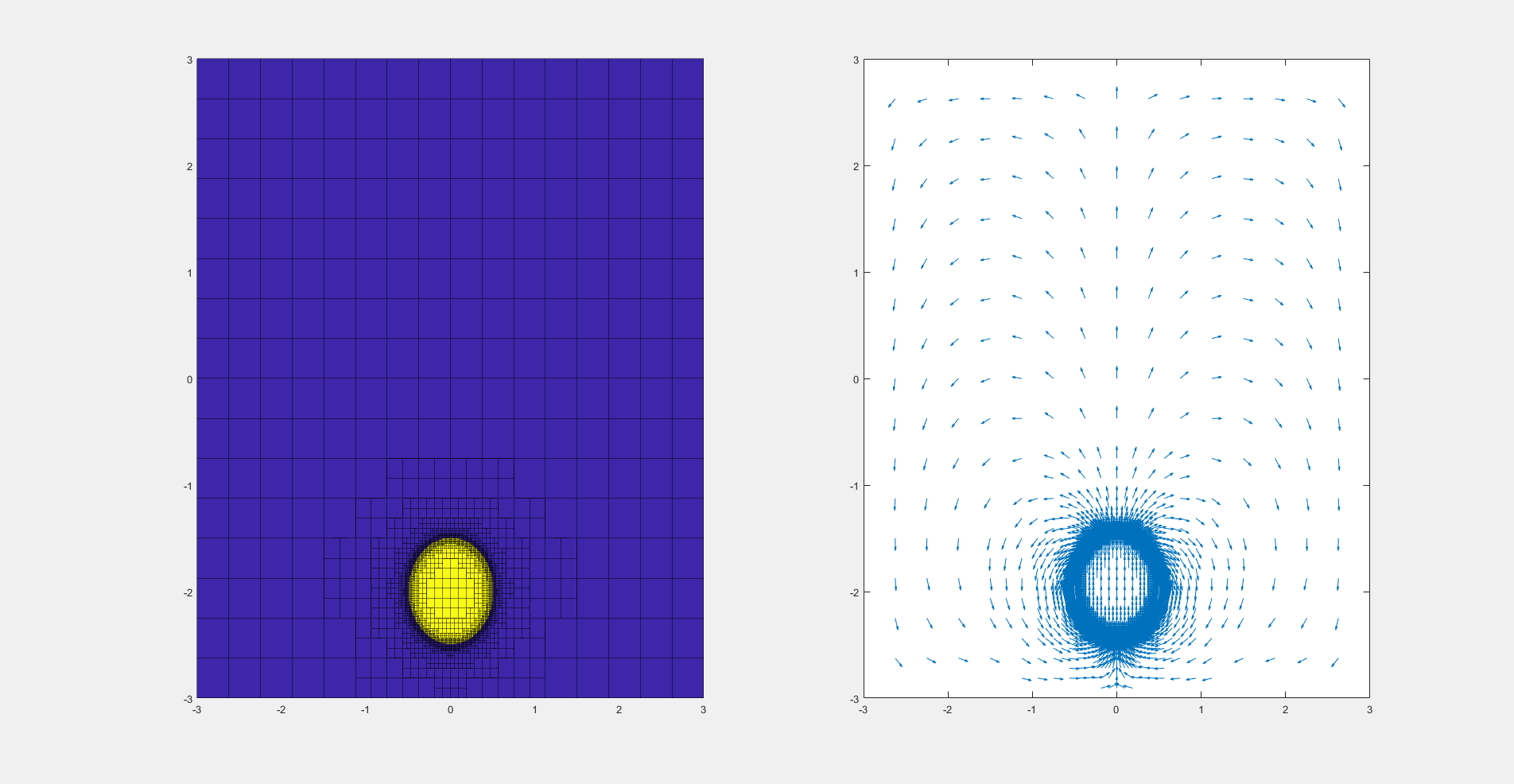
Computational Fluid Dynamics
Simulating and predicting motion of fluids is one of the important problem in the world technology. Our main interest is to implement various fluid simulations with high order accuracy as well as efficiency. Here we introduce our two main research areas.

● Euler Equations for Compressible Flow

Mathematically, the Euler equations are a system of Hyperbolic Conservation Law (HCL) whose conserved physical quantities are mass, momentum, and energy. The solution of HCL is completely determined by the characteristics along which the information of the solution propagates. The main difficulty in solving HCL is that the solution may develop shock during evolution. Since the standard FDM(Finite Difference Method) scheme is valid under enough differentiability assumptions, developing robust shock-capturing numerical schemes have been an important topic in the field. We have mainly focused on developing a novel shock-capturing numerical scheme with the aid of the mathematical tool. The following animation describes the flow in a wind tunnel containing a step.


● Naiver-Stokes Equations for Incompressible Flow
The Navier–Stokes equations describe the motion of viscous fluid substances, thus they are crucial keys to describing the physics of many phenomena of scientific and engineering interest. Despite their wide practical uses, it has not yet been proven that in three dimensions solutions always exist, or that if they do exist, then they are smooth. Especially, our main interest is to develop novel numerical schemes for solving Navier-Stokes equations under the level set framework. Our target problem includes multiphase core-annular flow, contact angle problems, etc. The first two animations describe the core-annular flow in a horizontal, vertical pipe, which is used for the transportation of heavy crude oil. The following simulation shows the behavior of water when filling the box. The last animation simulates the rising of a bubble in the viscous liquid due to buoyancy by leveraging an adaptive grid.



